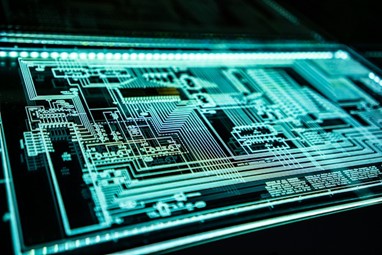The automotive industry has witnessed a rapid evolution in vehicle technology, with Advanced Driver-Assisted Systems…

Building Cyber Resilience Through Innovation with High Performance Computing and AI Research Initiatives
In the cybersecurity sector, the fusion of High-Performance Computing (HPC) and Artificial Intelligence (AI) stands out as a transformative force. Across government agencies, academic institutions, and industry consortia, collaborative research initiatives are harnessing the power of HPC-AI capabilities to reinforce cybersecurity programs, strengthen defense strategies and proactively combat increasingly sophisticated threats.
Government-Funded Programs Leading the Charge
Government agencies have been at the forefront of funding research initiatives aimed at advancing HPC-AI capabilities for cybersecurity. Programs such as the National Science Foundation (NSF) Cyber-Physical Systems (CPS) program and the Department of Defense (DoD) Cyber Scholarship Program (CySP) provide critical support for cutting-edge research in this field.
Academic Partnerships Driving Innovation
Academic institutions play a pivotal role in driving innovation in HPC-AI cybersecurity research. Collaborative partnerships between universities, research labs, and government entities facilitate the development of groundbreaking technologies and methodologies for threat intelligence, cyber threat hunting, and digital forensics.
Industry Consortia Fostering Collaboration
Industry consortia bring together leading cybersecurity firms, technology companies, and academic researchers to tackle complex challenges and drive industry-wide innovation. Initiatives like the Cyber Threat Intelligence Integration Center (CTIIC) and the Cybersecurity and Infrastructure Security Agency (CISA) collaborate with industry partners to develop HPC-powered AI applications for threat detection and response.
Breakthroughs and Innovations in HPC-AI Applications
The intersection of HPC and AI has led to significant breakthroughs in cybersecurity, revolutionizing how organizations detect, analyze, and mitigate cyber threats. Some notable advancements include:
- Threat Intelligence: HPC-powered AI algorithms analyze vast amounts of data from disparate sources to identify emerging threats and trends in real-time. By aggregating and correlating threat data, organizations can proactively defend against cyber-attacks and minimize the impact of security incidents.
- Cyber Threat Hunting: HPC enables rapid data processing and analysis, empowering security analysts to conduct proactive threat hunting activities. AI-driven threat hunting tools leverage machine learning models to identify suspicious behavior patterns and anomalies indicative of potential security breaches.
- Digital Forensics: HPC accelerates digital forensics investigations by enabling high-speed data acquisition, processing, and analysis. AI algorithms assist forensic analysts in reconstructing digital crime scenes, identifying evidence, and attributing cyber-attacks to threat actors with greater accuracy and efficiency.

Driving the Evolution of Cyber Defense Strategies
The integration of HPC-AI capabilities is driving the evolution of cyber defense strategies, enabling organizations to adapt to the dynamic threat landscape more effectively. By harnessing the power of HPC and AI, cybersecurity professionals can:
- Enhance Threat Detection: HPC-powered AI applications enable organizations to detect and respond to cyber threats with greater speed and accuracy, reducing the dwell time of attackers and minimizing the impact of security incidents.
- Improve Incident Response: AI-driven automation streamlines incident response processes, enabling security teams to prioritize and remediate security incidents more efficiently. By leveraging HPC for rapid data processing, organizations can shorten response times and mitigate the impact of cyber-attacks.
- Strengthen Resilience: By leveraging HPC-AI capabilities for threat intelligence, cyber threat hunting, and digital forensics, organizations can strengthen their cyber resilience and better protect critical assets and infrastructure from cyber threats.
Conclusion
In conclusion, the ongoing research initiatives and collaborative projects geared towards enhancing High Performance Computing (HPC) and Artificial Intelligence (AI) capabilities for cybersecurity mark a pivotal moment in the realm of digital defense.
These endeavors signify a concerted effort to not only bolster the efficacy of threat intelligence but also to fortify cyber threat hunting and digital forensics methodologies. By leveraging the formidable capabilities of HPC and AI, organizations stand poised to strengthen their cyber defense strategies and proactively mitigate evolving threats in the intricate and ever-evolving threat landscape of the digital age. Through the fusion of cutting-edge technology and collaborative efforts, the future of cybersecurity is being reshaped, paving the way for a more resilient and secure digital ecosystem.



